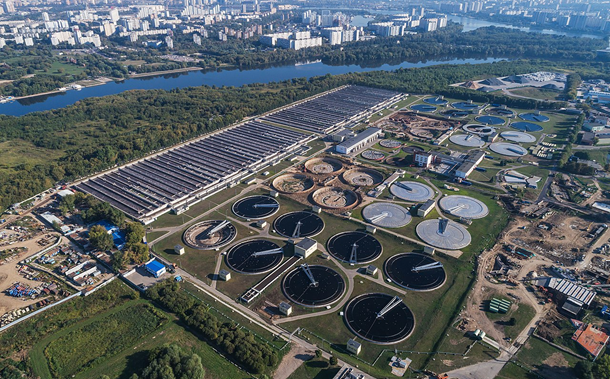Investigating the Influence of Functional Units on the Life Cycle Assessment of Asphalt Pavements
Downloads
The Life Cycle Assessment (LCA) of asphalt pavements is an essential tool for reducing environmental impacts. The definition of the functional unit (FU) within LCA can significantly influence the results, affecting the assessment of greenhouse gas (GHG) emissions and, consequently, the selection of asphalt mixtures. In this context, this study aims to analyze the impact of different functional units on the selection of asphalt mixtures for road pavements, considering the phases of raw material extraction, material production, mixing, and construction. To this end, the mechanical behavior of two distinct asphalt mixtures was evaluated under two different loading conditions, and their contributions to climate change were assessed using three functional units: t CO₂ eq/km of roadway, kg CO₂ eq/t of HMA, and kg CO₂ eq/m³ of HMA. The results indicated that asphalt mixtures with a higher resilient modulus require thinner pavement layers, leading to lower GHG emissions. However, when asphalt mixtures are analyzed individually and compared, no clear pattern in GHG emissions is observed, reflecting the specific characteristics of each production process. Additionally, it was found that the environmental impact varied according to the adopted functional unit, demonstrating that this choice can significantly influence decision-making regarding the selection of asphalt mixtures in terms of their contributions to climate change. It was concluded that the selection of the FU in pavement LCA should be aligned with the study's objective and the context of the analysis, as an inadequate choice may compromise the selection of asphalt mixtures.
Downloads
[1] Confederação Nacional de Transporte (CNT). (2024). CNT Highways Survey 2024. Confederação Nacional de Transporte (CNT), Brasília, Brazil. Available online: https://cnt.org.br/documento/cbf59b9e-fd1a-41fc-b230-172c4dc42100 (accessed on August 2025). (In Portuguese).
[2] IIPCC. (2021). Climate Change 2021: The Physical Science Basis. The Working Group I contribution to the Sixth Assessment Report addresses the most up-to-date physical understanding of the climate system and climate change, bringing together the latest advances in climate science. Intergovernmental Panel on Climate Change (IIPCC), Geneva, Switzerland.
[3] Brundtland, G., Khalid, M., Agnelli, S., Al-Athel, S., Chidzero, B., Fadika, L., Hauff, V., Lang, I., Ma, S.J., de Botero, M.M., Singh, M., Okita, S., et al. (1987) Our Common Future: Brundtland Report, Oxford University Press, Oxford, United Kingdom.
[4] Crawford, R. H. (2008). Validation of a hybrid life-cycle inventory analysis method. Journal of Environmental Management, 88(3), 496–506. doi:10.1016/j.jenvman.2007.03.024.
[5] Santos, J., Bressi, S., Cerezo, V., Lo Presti, D., & Dauvergne, M. (2018). Life cycle assessment of low temperature asphalt mixtures for road pavement surfaces: A comparative analysis. Resources, Conservation and Recycling, 138, 283–297. doi:10.1016/j.resconrec.2018.07.012.
[6] Farina, A., Kutay, E., & Anctil, A. (2024). Mechanistic-empirical pavement design to include mechanical performance of rubberized asphalt pavements in the use stage of life cycle assessment. Resources, Conservation and Recycling, 206, 107618. doi:10.1016/j.resconrec.2024.107618.
[7] Jasim, A. F., Ali, Z. K., & Al-Saadi, I. F. (2024). A Comprehensive Review of Life Cycle Cost Assessment of Recycled Materials in Asphalt Pavements Rehabilitation. Advances in Civil Engineering, 2004803. doi:10.1155/2024/2004803.
[8] Du, Y., Gao, Z., Liu, C., Weng, Z., Ren, X., & Li, W. (2025). Comprehensive review on greenhouse gas emission assessment over the full life-cycle of pavement. Case Studies in Construction Materials, 22, e04407. doi:10.1016/j.cscm.2025.e04407.
[9] Chong, D., Wang, Y., Dai, Z., Chen, X., Wang, D., & Oeser, M. (2018). Multiobjective optimization of asphalt pavement design and maintenance decisions based on sustainability principles and mechanistic-empirical pavement analysis. International Journal of Sustainable Transportation, 12(6), 461–472. doi:10.1080/15568318.2017.1392657.
[10] Hasan, U., Whyte, A., & Al Jassmi, H. (2019). Critical review and methodological issues in integrated life-cycle analysis on road networks. Journal of Cleaner Production, 206, 541–558. doi:10.1016/j.jclepro.2018.09.148.
[11] Alsehaimi, A., Alrasheed, K. A., Hayat, S., Nisar, S., & Benjeddou, O. (2024). The Challenges of Implementing Cognitive Computing in Small Construction Projects: A Data-Driven Perspective. Civil Engineering Journal (Iran), 10(9), 2935-2953. doi:10.28991/CEJ-2024-010-09-011.
[12] Alharbi, F., Haider, H., Almoshaogeh, M., Alahi, M. N., & Jamal, A. (2025). Integrated LCA and LCCA for various compositions and traffic classes of hot mix asphalt and cold in-place recycling pavements in Saudi Arabia. Case Studies in Construction Materials, 22, 4897. doi:10.1016/j.cscm.2025.e04897.
[13] Khan, S., Li, H., Ncube, M. H., Butt, A. A., Han, Y., & Harvey, J. (2025). Environmental implications of recycled materials in pavement construction: A comprehensive review and future research directions. Transportation Research Part D: Transport and Environment, 140, 104642. doi:10.1016/j.trd.2025.104642.
[14] Wang, J., Zhang, R., Zhou, H., Huang, W., Feng, D., & Li, X. (2025). Optimization of asphalt mix design considering mixture performance, environmental impact, and life cycle cost. Journal of Cleaner Production, 512, 145618. doi:10.1016/j.jclepro.2025.145618.
[15] Hauschild, M. Z., Rosenbaum, R. K., & Olsen, S. I. (2018). Life Cycle Assessment. Springer International Publishing, Cham, Switzerland. doi:10.1007/978-3-319-56475-3.
[16] Cong, L., Guo, G., Yu, M., Yang, F., & Tan, L. (2020). The energy consumption and emission of polyurethane pavement construction based on life cycle assessment. Journal of Cleaner Production, 256. doi:10.1016/j.jclepro.2020.120395.
[17] Thives, L. P., & Ghisi, E. (2017). Asphalt mixtures emission and energy consumption: A review. Renewable and Sustainable Energy Reviews, 72, 473–484. doi:10.1016/j.rser.2017.01.087.
[18] Vega A, D. L., Santos, J., & Martinez-Arguelles, G. (2022). Life cycle assessment of hot mix asphalt with recycled concrete aggregates for road pavements construction. International Journal of Pavement Engineering, 23(4), 923–936. doi:10.1080/10298436.2020.1778694.
[19] Moins, B., Hernando, D., Buyle, M., Van den bergh, W., & Audenaert, A. (2024). Reviewing the variability in product category rules for asphalt pavements – A quantitative evaluation of methodological framework differences for environmental product declarations. Journal of Cleaner Production, 436, 140580. doi:10.1016/j.jclepro.2024.140580.
[20] de Simone Souza, H. H., de Abreu Evangelista, P. P., Medeiros, D. L., Albertí, J., Fullana-i-Palmer, P., Boncz, M. Á., Kiperstok, A., & Gonçalves, J. P. (2021). Functional unit influence on building life cycle assessment. International Journal of Life Cycle Assessment, 26(3), 435–454. doi:10.1007/s11367-020-01854-1.
[21] ISO 14040:2006. (2006). Environmental management — Life cycle assessment — Principles and framework. International Organization for Standardization (ISO), Geneva, Switzerland.
[22] ISO 14044:2006. (2006). Environmental management — Life cycle assessment — Requirements and guidelines. International Organization for Standardization (ISO), Geneva, Switzerland.
[23] DeMarco, M., & Fortier, M. O. P. (2022). Functional unit choice in space conditioning life cycle assessment: Review and recommendations. Energy and Buildings, 255, 111626. doi:10.1016/j.enbuild.2021.111626.
[24] de Medina, J., & da Motta, L. M. G. (2015). Pavement mechanics. Editora Interciência, Rio de Janeiro, Brazil. (In Portuguese).
[25] Osorto, M. R. R., & Casagrande, M. D. T. (2023). Environmental Impact Comparison Analysis between a Traditional Hot Mixed Asphalt (HMA) and with the Addition of Recycled Post-Consumer Polyethylene Terephthalate (RPET) through the Life Cycle Assessment (LCA) Methodology. Sustainability (Switzerland), 15(2), 1102. doi:10.3390/su15021102.
[26] Plati, C. (2019). Sustainability factors in pavement materials, design, and preservation strategies: A literature review. Construction and Building Materials, 211, 539–555. doi:10.1016/j.conbuildmat.2019.03.242.
[27] Gouveia, B. G. (2023). Influence of Machining Temperature on Life Cycle Analysis of Asphalt Mixtures. Ph.D. Thesis, Universidade Federal do Rio de Janeiro, Rio de Janeiro, Brazil. (In Portuguese).
[28] Huang, Y., & Parry, T. (2014). Pavement Life Cycle Assessment. Climate Change, Energy, Sustainability and Pavements. Green Energy and Technology. Springer, Berlin, Germany. doi:10.1007/978-3-662-44719-2_1.
[29] Suwarto, F., Parry, T., & Airey, G. (2024). Review of methodology for life cycle assessment and life cycle cost analysis of asphalt pavements. Road Materials and Pavement Design, 25(8), 1631–1657. doi:10.1080/14680629.2023.2278149.
[30] Balaguera, A., Carvajal, G. I., Albertí, J., & Fullana-i-Palmer, P. (2018). Life cycle assessment of road construction alternative materials: A literature review. Resources, Conservation and Recycling, 132, 37–48. doi:10.1016/j.resconrec.2018.01.003.
[31] Vidal, R., Moliner, E., Martínez, G., & Rubio, M. C. (2013). Life cycle assessment of hot mix asphalt and zeolite-based warm mix asphalt with reclaimed asphalt pavement. Resources, Conservation and Recycling, 74(0), 101–114. doi:10.1016/j.resconrec.2013.02.018.
[32] Araújo, J. P. C., Oliveira, J. R. M., & Silva, H. M. R. D. (2014). The importance of the use phase on the LCA of environmentally friendly solutions for asphalt road pavements. Transportation Research Part D: Transport and Environment, 32, 97–110. doi:10.1016/j.trd.2014.07.006.
[33] Ferreira, V. J., Sáez-De-Guinoa Vilaplana, A., García-Armingol, T., Aranda-Usón, A., Lausín-González, C., López-Sabirón, A. M., & Ferreira, G. (2016). Evaluation of the steel slag incorporation as coarse aggregate for road construction: Technical requirements and environmental impact assessment. Journal of Cleaner Production, 130, 175–186. doi:10.1016/j.jclepro.2015.08.094.
[34] Inyim, P., Pereyra, J., Bienvenu, M., & Mostafavi, A. (2016). Environmental assessment of pavement infrastructure: A systematic review. Journal of Environmental Management, 176, 128–138. doi:10.1016/j.jenvman.2016.03.042.
[35] Jiang, R., & Wu, P. (2019). Estimation of environmental impacts of roads through life cycle assessment: A critical review and future directions. Transportation Research Part D: Transport and Environment, 77, 148–163. doi:10.1016/j.trd.2019.10.010.
[36] Aryan, Y., Dikshit, A. K., & Shinde, A. M. (2023). A critical review of the life cycle assessment studies on road pavements and road infrastructures. Journal of Environmental Management, 336, 117697. doi:10.1016/j.jenvman.2023.117697.
[37] Liljenström, C., Björklund, A., & Toller, S. (2022). Including maintenance in life cycle assessment of road and rail infrastructure—a literature review. International Journal of Life Cycle Assessment, 27(2), 316–341. doi:10.1007/s11367-021-02012-x.
[38] Donato, M. (2023). Assessment of the influences of hydromechanical behavior on the subgrade through pavement life cycle analysis . PhD Thesis, Universidade Federal do Rio de Janeiro, Rio de Janeiro, Brazil. (In Portuguese).
[39] TED n° 682/2014. (2020). Execution of studies and research for the development of a mechanistic-empirical analysis method for the design of asphalt pavements. Departamento Nacional de Infraestrutura de Transportes (DNIT), Brasília, Brazil. (In Portuguese).
[40] IS-247. (2021). Studies for the Development of Implementation Projects using the National Sizing Method - MeDiNa. Departamento Nacional de Infraestrutura de Transportes (DNIT), Brasília, Brazil. (In Portuguese).
[41] DNIT 134/2018-ME. (2018). Paving - Soils - Determination of the resilience modulus - Test method. Departamento Nacional de Infraestrutura de Transportes (DNIT), Brasília, Brazil. (In Portuguese).
[42] DNIT 135/2018-ME. (2018). Asphalt paving - Asphalt mixtures - Determination of the resilience modulus - Test method. Departamento Nacional de Infraestrutura de Transportes (DNIT), Brasília, Brazil. (In Portuguese).
[43] DNIT 136/2018-ME. (2018). Asphalt paving – Asphalt mixtures – Determination of tensile strength by diametrical compression – Test method. Departamento Nacional de Infraestrutura de Transportes (DNIT), Brasília, Brazil. (In Portuguese).
[44] DNIT 179/2018-IE. (2018). Paving – Soils – Determination of permanent deformation – Test Instructions. Departamento Nacional de Infraestrutura de Transportes (DNIT), Brasília, Brazil. (In Portuguese).
[45] DNIT 183/2018-ME. (2018). Asphalt paving – Mixtures – Controlled stress diametrical compression fatigue test – Test method.Departamento Nacional de Infraestrutura de Transportes (DNIT), Brasília, Brazil. (In Portuguese).
[46] SICRO. (2024). Rio de Janeiro State Database for October 2024. Sistema de Custos Referenciais de Obras. Available online: https://www.gov.br/dnit/pt-br/assuntos/planejamento-e-pesquisa/custos-e-pagamentos/custos-e-pagamentos-dnit/sistemas-de-custos/sicro_antiga/sudeste/rio-de-janeiro/2024/janeiro/janeiro-2024 (accessed on August 2025).
[47] Donato, M., Gouveia, B. G., de Medeiros, A. S., da Silva, M. A. V., & Oda, S. (2022). Mechanical Analysis of Subgrades of Road Pavements in Life Cycle Assessment. Civil Engineering Journal (Iran), 8(7), 1492–1506. doi:10.28991/CEJ-2022-08-07-012.
[48] MEDINA. (2023). "Banco de dados". Colaboração entre: Departamento Nacional de Infraestrutura de Transportes – DNIT, Instituto de Pesquisas Rodoviárias – IP, Instituto Alberto Luiz Coimbra de Pós-Graduação e Pesquisa de Engenharia, da Universidade Federal do Rio de Janeiro – COPPE e Centro de Pesquisas da Petrobras – CENPES. Versão do programa 1.1.9.0 (abril de 2023). Versão de base de dados: 1200. Available online: https://www.gov.br/dnit/pt-br/assuntos/planejamento-e-pesquisa/ipr/medina/solicitacao-de-download-do-medina (accessed on August 2025). (In Portuguese).
[49] Flôra, C. S. D. (2018). Mechanical behavior of two asphalt mixtures using a warm mix surfactant additive. Master Thesis, Universidade Federal do Rio de Janeiro, Rio de Janeiro, Brazil. (In Portuguese).
[50] Grupo CCR. (2010). Comparative study of the fatigue behavior of bituminous mixtures with different asphalt contents. PEC-8650, Final Report, Grupo CCR, Rio de Janeiro, Brazil. Available online: https://portal.antt.gov.br/documents/359170/966006/ Estudo+comparativo+do+comportamento+de+fadiga+de+misturas+betuminosas+com+diferentes+teores+de+asfalto+%281%29.pdf/15768439-8383-f971-8fe2-05d51303eee6?t=1593233950907 (accessed on August 2025). (In Portuguese).
- Authors retain all copyrights. It is noticeable that authors will not be forced to sign any copyright transfer agreements.
- This work (including HTML and PDF Files) is licensed under a Creative Commons Attribution 4.0 International License.![]()














